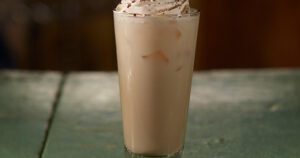Collard Green Kimchi
Servings
2 Pounds
Prep Time
30 Minutes

Share
Ingredients
- 2lbs Collard Greens
- 1/4 cup Sea Salt
- 1/4 cup Gochugaru
- 5 1/2 Tbsp Shimp Paste
- 1 tsp Sugar
- 1 Tbsp Garlic, minced
- 2tsp Ginger, minced
- 8oz Daikon Radish, julienne
- 8oz Carrots, julienne
- 4oz Scallions
Recipe Preparation
- Bring 4 cups of water to a boil in a large pot. While it heats, trim stems that extend past the ends of the collard leaves, cut steams in half lengthwise, and set aside in a large heat-safe bowl. Cut the collard leaves crosswise into 2- to 3-inch wide strips and place them in the bowl with the stems. Sprinkle the salt over the greens and gently massage it into the leaves until they begin to soften.
- When the water comes to a boil, turn off heat and let stand for 3 minutes, then pour water over collards. Wait 5 minutes, then add 2 to 3 cups of ice to the bowl. Let collards stand for about 30 minutes, gently massaging them occasionally.
- Drain collards in a colander and rinse under cold running water; rinse out the bowl too. Return collards to the bowl, with cold water to cover, and let stand for about 10 minutes. Drain collards again and run cold water over them for 5 minutes, tossing occasionally to ensure water gets between the leaves.
- Combine gochugaru, fish sauce, sugar, garlic, and ginger in a small bowl. Add 2 tablespoons of water and stir to make a paste.
- Squeeze any excess water from the collards and return them to the bowl. Add daikon, carrot, scallions, and gochugaru paste and use your hands to work the paste into the veggies. Try to peel apart the collard leaves as much as possible so that the paste can get all up in there.
- Transfer collard mixture to a 3-quart glass jar (or multiple smaller jars) with an airtight lid, leaving about 2 inches of headspace at the top. Pour ¼ cup of water into the large bowl and swirl it around to pick up any seasonings left behind, then pour it into the jar.
- Screw lid onto jar and set it in a cool, dark place. Check the kimchi every day. After 2 or 3 days, you should start to see some bubbles forming near the bottom. Loosen the lid to allow gas to escape for about 5 minutes before retightening the lid. After about 5 days (fewer if your bubbles are very active), transfer the kimchi to the refrigerator to continue maturing. Loosen the lid periodically to vent gas.
- The kimchi can be eaten at any point, but it is best after a few days in the fridge (and stays good for about a month). The fun part is tasting a little each day and seeing how it’s coming along. It should develop more and more rich, melded, umami flavor the longer it sits.
Food Comes First.
We believe in the power of good food—to bring people together and make moments special.



























